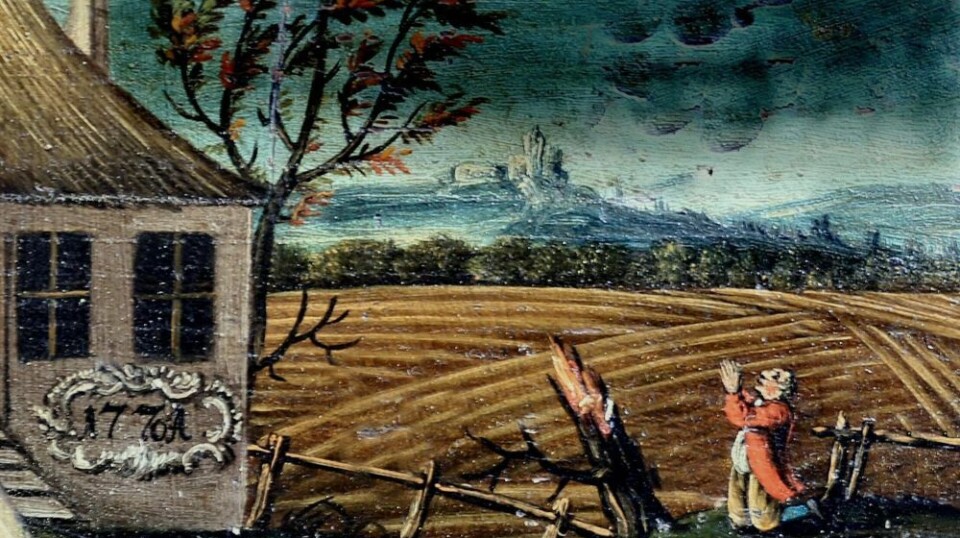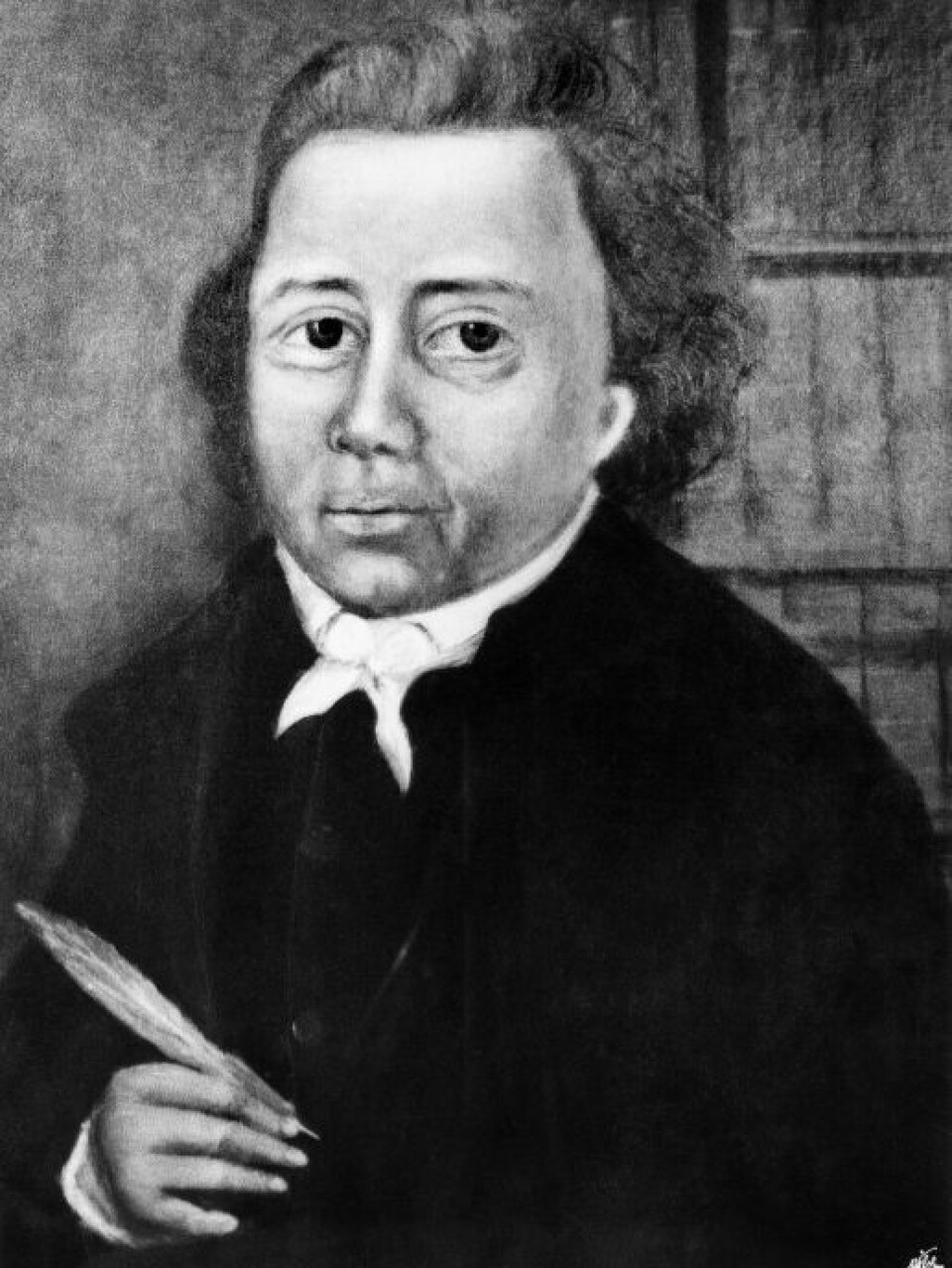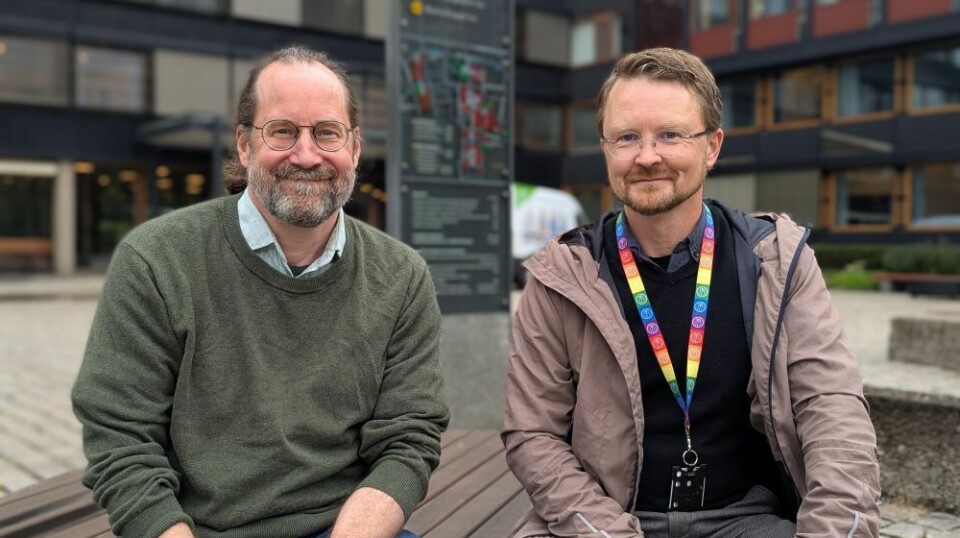THIS CONTENT IS BROUGHT TO YOU BY University of Oslo - read more
Researchers see striking parallels between past and present climate debates
Do you feel that climate engagement is pointless? A story from the 18th century may offer hope.

“When you're working towards something bigger, it's easy to see the limitations of your own lifetime. But major changes often happen unexpectedly – perhaps when you've already given up hope,” says Dominik Collet, a professor of history at the University of Oslo.
Together with other researchers, he has studied how temperature changes during ‘the Little Ice Age’ affected people in Norway.
The Little Ice Age lasted from the 1300s to around 1900 and affected mainly Europe and North America. The average temperature was up to 1.5 degrees colder than in modern times.
In Norway, it was particularly cold at the end of the 18th century.
The first global weather observations
The changes in temperature led to a shorter growing season in agriculture, leading to food shortages and famines in Norway.

Jacob Nicolay Wilse, who was both a parish priest in the municipality of Spydeberg and a scientist – a combination of roles not uncommon at the time – noticed the changes in several ways.
From his rural home, he was part of a global network that made the first worldwide weather observations. At the rectory in Spydeberg, he established one of two weather stations in Norway, and the only one that was part of the so-called Mannheim network.
“Because of this network, we have amazing weather observations from the years 1781 to 1792. They set a standard for climate science, and these observations are the basis for what we know about the climate at that time,” says Ingar Mørkestøl Gundersen, a postdoctoral researcher in history.
People did not want potatoes
Wilse noticed that temperatures were dropping. He also experienced the crises himself, having lost both his first wife and four children, and later his second wife and two more children. The exact causes of their deaths are uncertain, but there were several epidemics in Spydeberg at that time.
“Although he was well educated and more privileged than most, he did not escape the difficult times. Still, he tried to find solutions, especially improvements in agriculture, and he had both a pharmacy, an experimental garden, and a library at the rectory that people could access,” says Gundersen.
Wilse was a so-called ‘potato priest’ who advocated for the use of potatoes in Norway.
Potatoes can withstand colder and wetter conditions than grain, which dominated the diet at that time.
Collet explains that people were used to porridge and reacted to the potato priests' ideas with the same scepticism we often show towards potential solutions to future food crises.
“Insects, for example, are very nutritious, yet most people hesitate to try them. Food culture is deeply ingrained in people's habits and can be difficult to change,” he says.
Opposed by the system
Wilse also faced structural barriers.
“The entire society revolved around grains. They were easy to store and transport. Bread was associated with status, while potatoes were seen as inferior and were perceived by many as animal feed. Additionally, they're less suitable for storage and rot quicker,” says Gundersen.
Wilse's attempts to think long-term were hindered by both the people around him and the system he was part of, even though the need was great.
Researchers have discovered examples of how climate changes at that time affected ordinary people, in addition to those who were more privileged.
The ballad The Norwegians grief and lament from the 1770s tells the story of how a mother killed her four children with an axe because she had no food for them. The ballad explicitly mentions the climatic anomaly of 1771–1773 as the cause.
“We initially thought that the ballad was fictional. It was simply too brutal. Then we found out that it actually happened,” the researcher says.

Ten years after his death
Besides promoting potatoes, Wilse pushed for better public health and education. He strongly supported creating a Norwegian university and warned against overusing natural resources. He probably felt that he had not been heard when he died in 1801.
But in 1811, Norway's first university was founded, and potato cultivation took off around the same time. The Napoleonic Wars had blocked grain imports, while frost and rain ruined local crops.
In his 1841 work The History of Norway's Constitution, writer Henrik Wergeland praised Wilse's efforts to push for a Norwegian university as an important step towards the Norwegian Constitution in 1814.
The pressure had to be great and sustained enough for change to occur.
“But knowledge had to be there too. And according to Wergeland, Wilse was a key figure in this regard,” says Gundersen.
Parallels with today's climate debate
The two researchers draw several parallels to today's climate debate, such as:
- Understanding climate change is difficult, then as now. It involves people, not just precise measurements.
- Adaptation is challenging.
- There was a tendency back then, as there is today, to look for scapegoats instead of engaging in the difficult but necessary discussions.
“In the 17th century, instead of preparing society to handle the changes, people blamed ‘weather witches’, whom they believed used sorcery to create cold and rain. Today, it's easy to point to others' consumption. But it's the ideology of growth that's the major challenge, not your neighbour's diesel car,” says Collet.
However, by the late 18th century, changes began to occur, and according to the researchers, history shows that human efforts can have long-term consequences.
“You can always make an impact. You just have to lift your gaze beyond your own limited horizon and find partners,” he says.

This content is paid for and presented by the University of Oslo
This content is created by the University of Oslo's communication staff, who use this platform to communicate science and share results from research with the public. The University of Oslo is one of more than 80 owners of ScienceNorway.no. Read more here.
More content from the University of Oslo:
-
Researcher: "AI weakens our judgement"
-
New, worrying trend among incels, according to researcher
-
Ship’s logs have shaped our understanding of the sea
-
New study: The dilemma of copyright in the Global South
-
How your lifestyle affects your risk of bowel cancer
-
Muslims were pagans, according to the Norse sagas




































